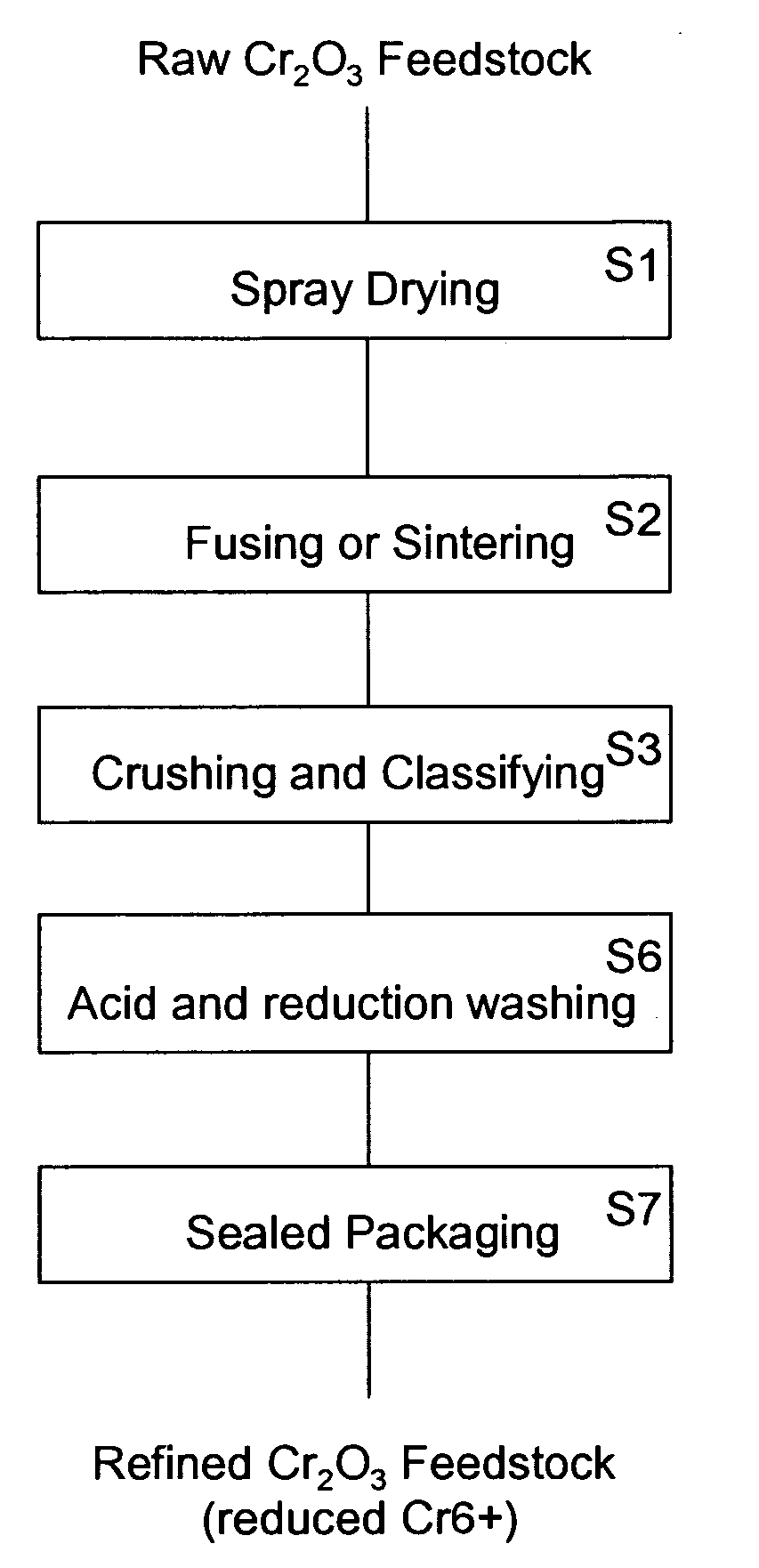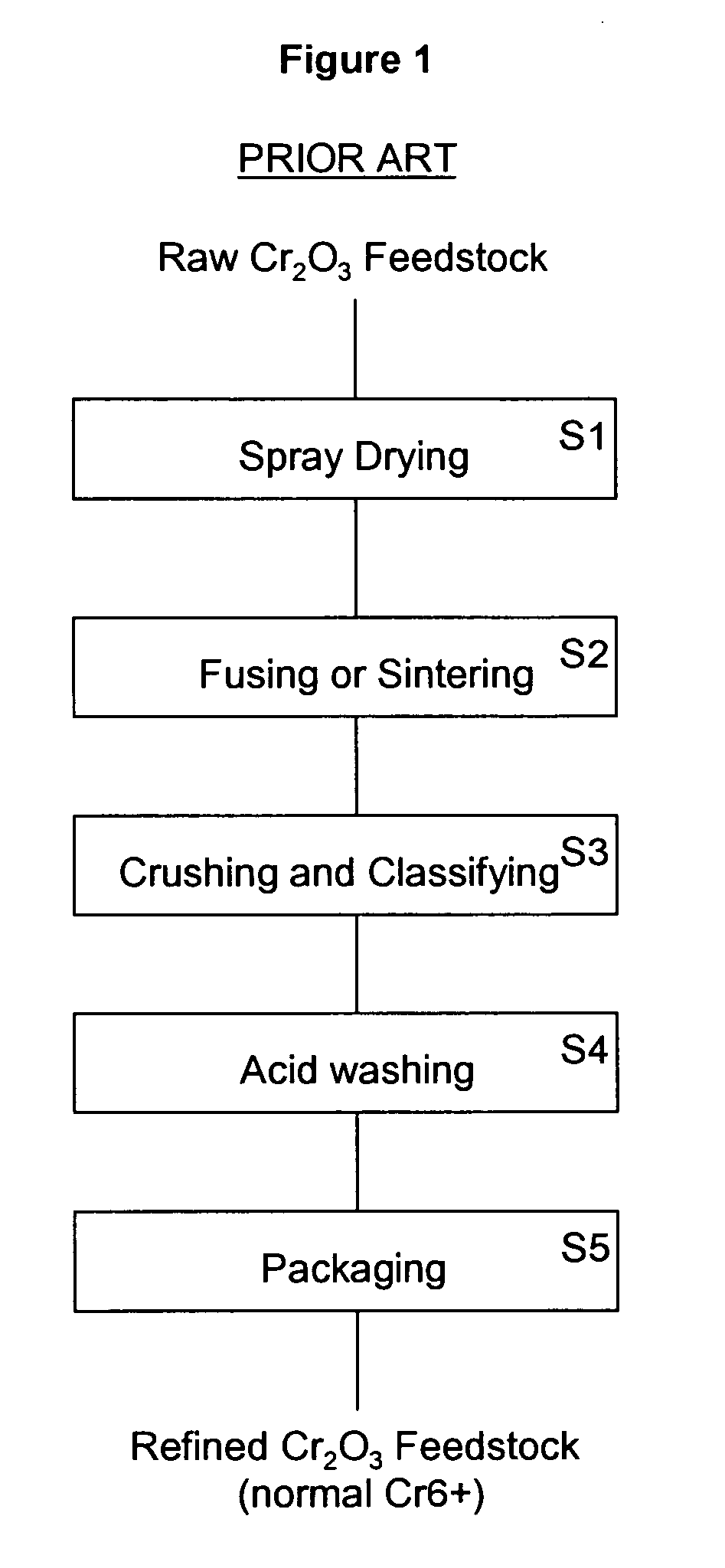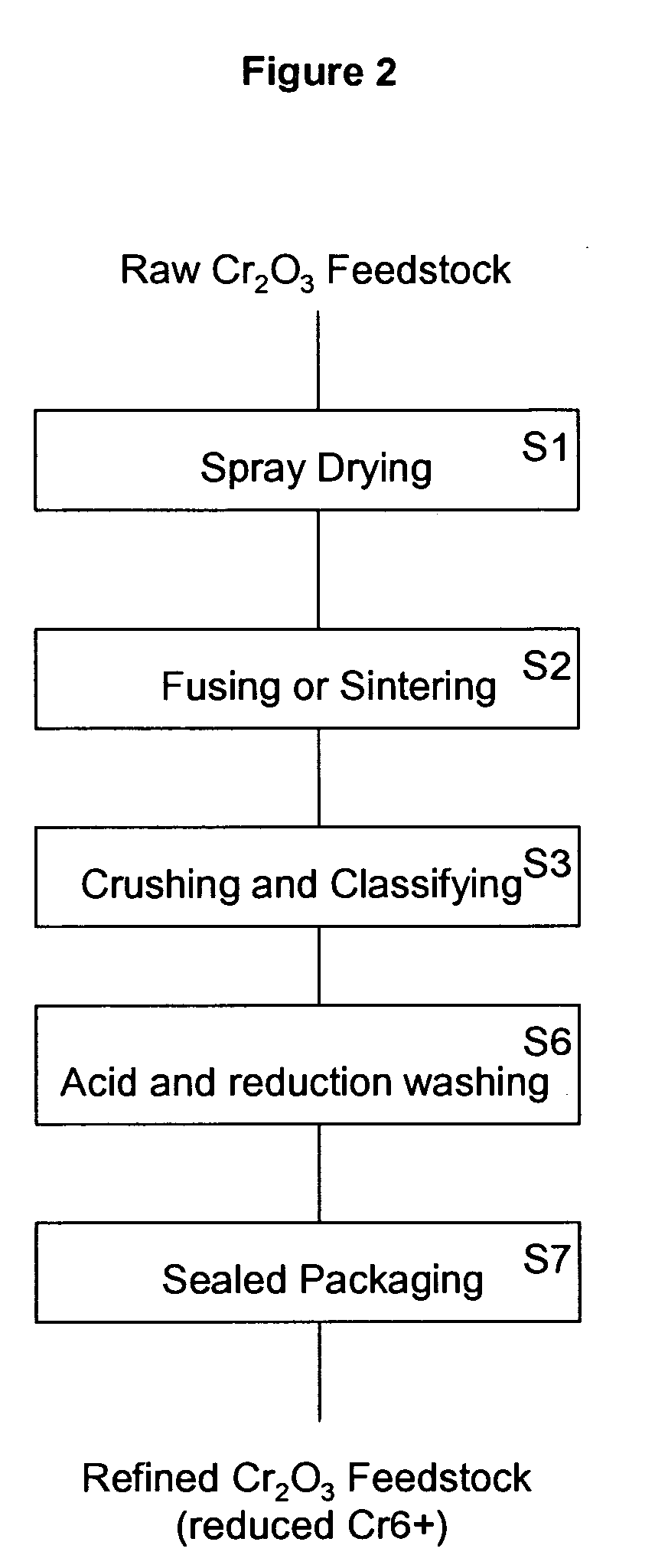Chromium oxide powder having a reduced level of hexavalent chromium and a method of making the powder
a technology of chromium oxide and powder, which is applied in the field of chromium oxide powder having a reduced a powder making method, can solve the problems of failure of the coating during use, scratch or crack in the coating which may spread, other scratches or cracks may also develop and grow into larger cracks, etc., to reduce the level of hexavalent chromium, increase the safety of the thermal spray operator, and reduce the level of hex
- Summary
- Abstract
- Description
- Claims
- Application Information
AI Technical Summary
Benefits of technology
Problems solved by technology
Method used
Image
Examples
first embodiment
[0027]the present invention combines the prior art acid washing step S4 with a reduction process (step S6). In this acid and reduction washing step S6, both metallic chromium (Cr) and hexavalent chromium are removed from the crushed and classified chromium oxide powder. Hexavalent chromium is a strong oxidizing agent, which can be reduced by a reducing agent in acidic solution (pH<7). An example of a suitable acid and reduction reaction is:
Cr2O3+2H2CrO4+H2C2O4+3H2SO4═Cr2O3+Cr2(SO4)3+2CO2+8H2 (3)
where the chromium oxide (Cr2O3) powder is added to a mixture of water (H2O), oxalic acid (H2C2O4), and sulfuric acid (H2SO4). The sulfuric acid provides the acidic environment for the reaction to occur. Hexavalent chromium (Cr6+) in the chromium oxide (Cr2O3) reacts with the water to form chromic acid (H2CrO4). The chromic acid is reduced by the oxalic acid into trivalent chromium (Cr3+). The trivalent chromium reacts with the sulfuric acid to form chromium sulfate (Cr2(SO4)3). The chromium...
second embodiment
[0029]the present invention follows the prior art acid washing step S4 with a heat treatment process (step S8). This heat treatment can also be used as a post-treatment of refined chromium oxide powder (containing hexavalent chromium) processed using the prior art technique shown in FIG. 1. The hexavalent chromium compounds in the chromium oxide powder are primarily CrO3 and H2CrO4. Much of the hexavalent chromium can be removed by the application of heat (>196° C.) under an inert gas or vacuum to decompose and evaporate the hexavalent chromium compounds. The chemical reactions involved in such a heat treatment are:
CrO3(s)=CrO3(g) (3)
2CrO3(s)=Cr2O3+3 / 2O2(g) (4)
2H2CrO4(s)=Cr2O3(s)+2H2O(g)+1 / 2O2 (5)
where s and g indicate solid and gaseous forms respectively. The solid forms of CrO3 and H2CrO4 are stable at room temperature, but not at higher temperatures (>196° C.). For example, CrO3 has a boiling point of 196° C. When heat (>196° C.) is applied, the chemical equilibrium of the ...
PUM
 Login to View More
Login to View More Abstract
Description
Claims
Application Information
 Login to View More
Login to View More - R&D
- Intellectual Property
- Life Sciences
- Materials
- Tech Scout
- Unparalleled Data Quality
- Higher Quality Content
- 60% Fewer Hallucinations
Browse by: Latest US Patents, China's latest patents, Technical Efficacy Thesaurus, Application Domain, Technology Topic, Popular Technical Reports.
© 2025 PatSnap. All rights reserved.Legal|Privacy policy|Modern Slavery Act Transparency Statement|Sitemap|About US| Contact US: help@patsnap.com



